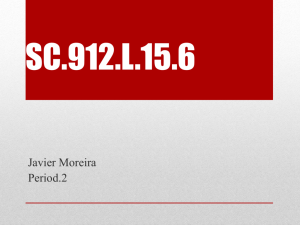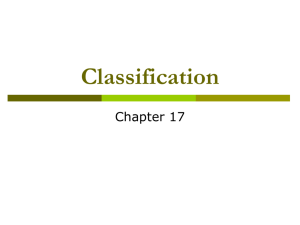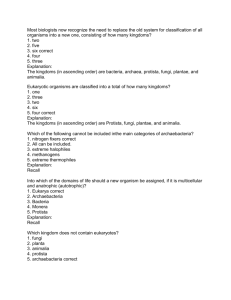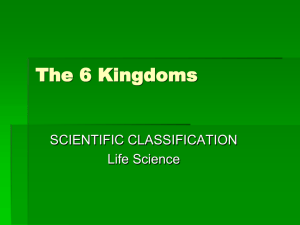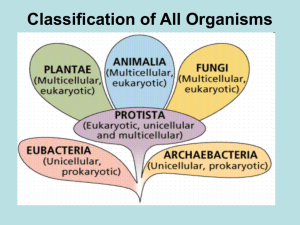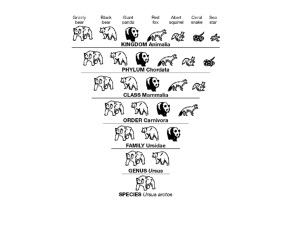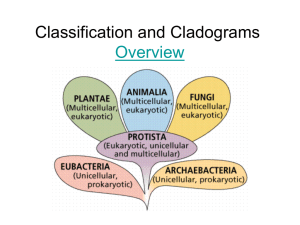6 kingdoms
advertisement
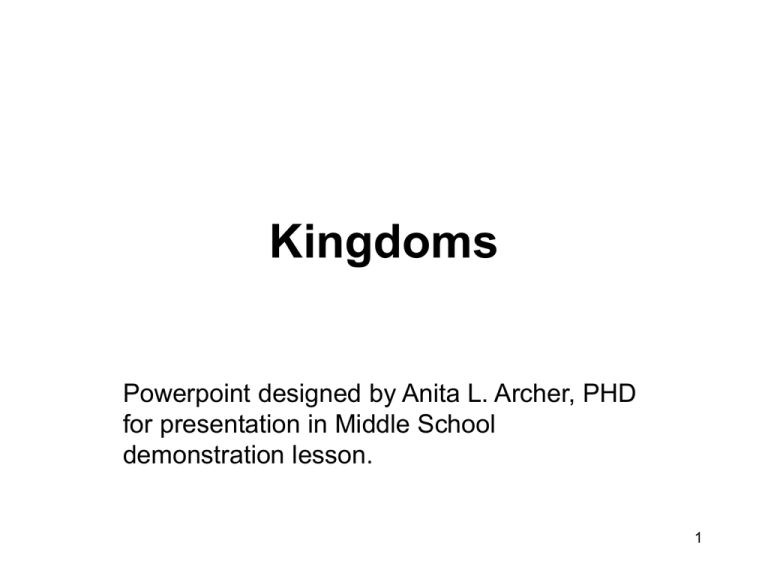
Kingdoms Powerpoint designed by Anita L. Archer, PHD for presentation in Middle School demonstration lesson. 1 classify To classify things means to divide them into groups or types so that things with similar characteristics are in the same group. 2 classify classifies classifying classified classification 3 Biological Classification Kingdom Phylum Class Order Family Genus Species 4 Classification • Chart 5 HELP for the Biologist • www.howjsay.com 6 6 Kingdoms • • • • • • Archaebacteria Eubacteria Protista (protists) Fungi Plantae (plants) Animalia (animals) 7 Characteristic Unicellular uni = one Multi-cellular multi = many 8 Characteristic Prokaryote - no true nucleus Eukaryote eu = true - a true nucleus 9 Characteristic Heterotroph heter = different troph = nutrition/ food Feeds on other organisms Autotroph auto = self troph = nutrition/food Makes own food 10 Archaebacteria archae = ancient 11 Archaebacteria 12 archaebacteria • Unicellular • Prokaryote • Some heterotroph • Some autotroph 13 Archaebacteria 14 Eubacteria eu = true • anthrax 15 Eubacteria 16 Eubacteria 17 Eubacteria • Unicellular • Prokaryote • Heterotroph & autotroph • Some helpful/some harmful 18 Protista (protists) 19 Protists 20 Protists (green Algae) 21 Protists (seaweed) 22 Protista (Protists) • Mostly unicellular • Eukaryote • Heterotroph & autotroph • “odds and ends” kingdom – NOT bacteria, animal, plant, or fungi • Algae 23 Fungi 24 Fungi 25 Fungi 26 Fungi • Multi-cellular • Eukaryote • Heterotroph – (food - decaying plants) • Mushrooms 27 Plantae (plants) QuickTime™ and a decompressor are needed to see this picture. 28 Plantae (plants) 29 Plantae • Multi-cellular • Eukaryote • Autotroph • 250,000 species 30 Animalia (animals) 31 Animalia (animals) 32 Animalia (animals) 33 Animalia (animals) 34 Animalia • Multi-cellular • Eukaryote • Heterotroph • 1 million species 35 Animals 36

